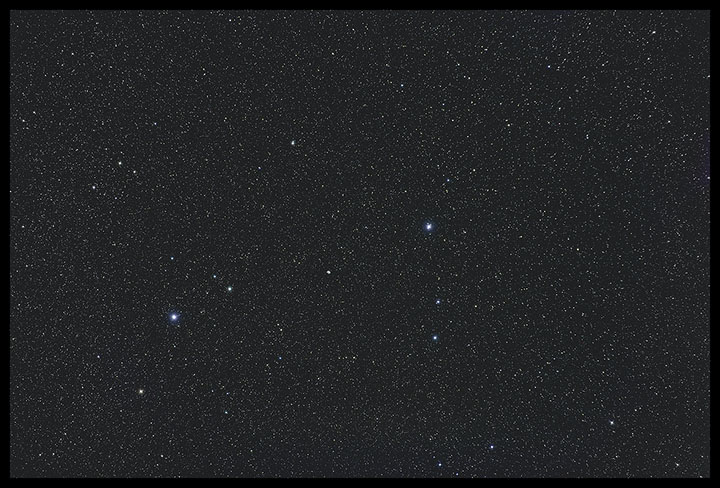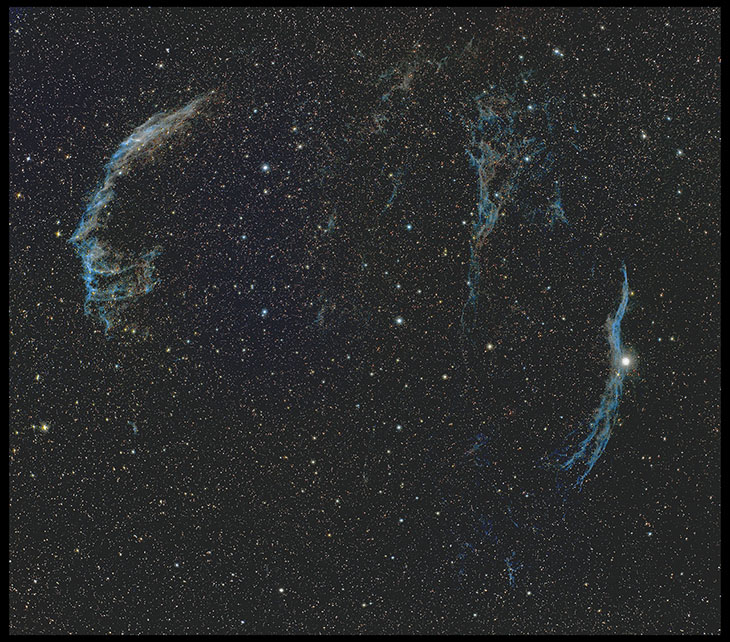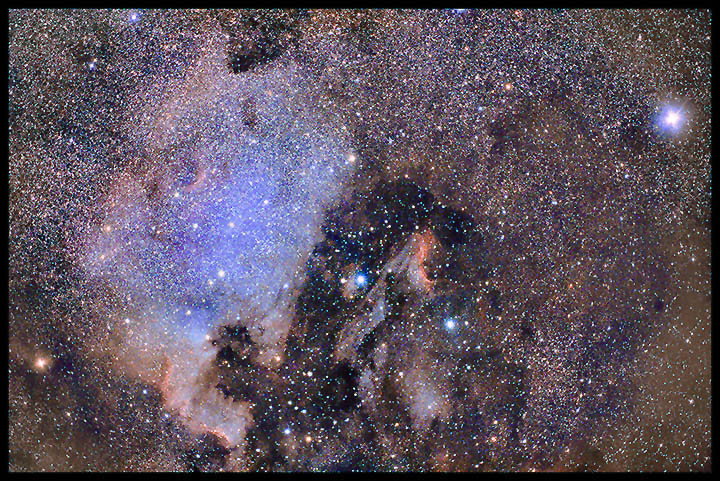The Photon Harvest
9/30/2016. I think focus is the remaining, easily addressed variable in the project to get the best possible widefield photos using the 6D and the TMB92SS. Spacing is as good as I can make it without micro-spacers or more lathe work or adopting an ultra-short adapter. But focus is critical and has real effects on both the shapes and sizes of Point Spread Functions.
Last year, I tried out Backyard EOS software and was suitably impressed. Never licensed it, though. Last night, I did. It should let me be systematic about focusing (among all sorts of other features) and will save my neck from the contortions required to look through the camera or at the LiveView screen. For the new images below, I focused by using Backyard EOS to monitor and minimize the FWHM of the PSF of a bright star very near the center of the field.
Click any of the images below for bigger, better versions. All are with the Canon 6D @ ISO 1600
through the TMB92SS @ F4.4 using the TeleVue TRF-2008 Flattener/Reducer.
Messier 57. It's tiny, of course, and very bright and contrasty, and it's set amid a brilliant starfield at the south end of Lyra. I wanted to show off the full field of the TMB92 combined with the Canon 6D. Light fall-off is a problem that flatfields don't entirely cure. Neither does the lens-correction utility in Photoshop. And even when you get the luminosity more or less even, there are color issues in the corners. Nevertheless, when you need it, this is the size of the field, and if you don't need to be particularly aggressive in the post-processing, it works very nicely from corner to corner.

Field of M57, The Ring Nebula
20x180s (1 hour)
The Veil Nebula. This supernova remnant is as huge as M57 is tiny. It just goes on and on, and some of it is very low contrast. I've cropped out the corners so I could be much more aggressive about stretching the histogram to show off the lace of shock fronts and glowing gas between the two bright arcs. The unmodified 6D attenuates the red hydrogen-alpha wavelength, so the glow of doubly ionized oxygen dominates this view.

NGC 6992, 6995, and 6960, The Veil Nebula
42x180s (2h06m)
Messier 31. The immense Andromeda galaxy. The field is cropped modestly, not as tightly as the Veil image. I took four hours of data, but dew or haze made the last half less useful, so this is a data fillet using just the first two hours' of exposures.

M31, the Great Andromeda Galaxy
37x180s (1h51m)
And for review, the North America Nebula from the night before including Deneb in the upper right corner.

NGC 7000, The North America Nebula
21x180s (1h 03m)